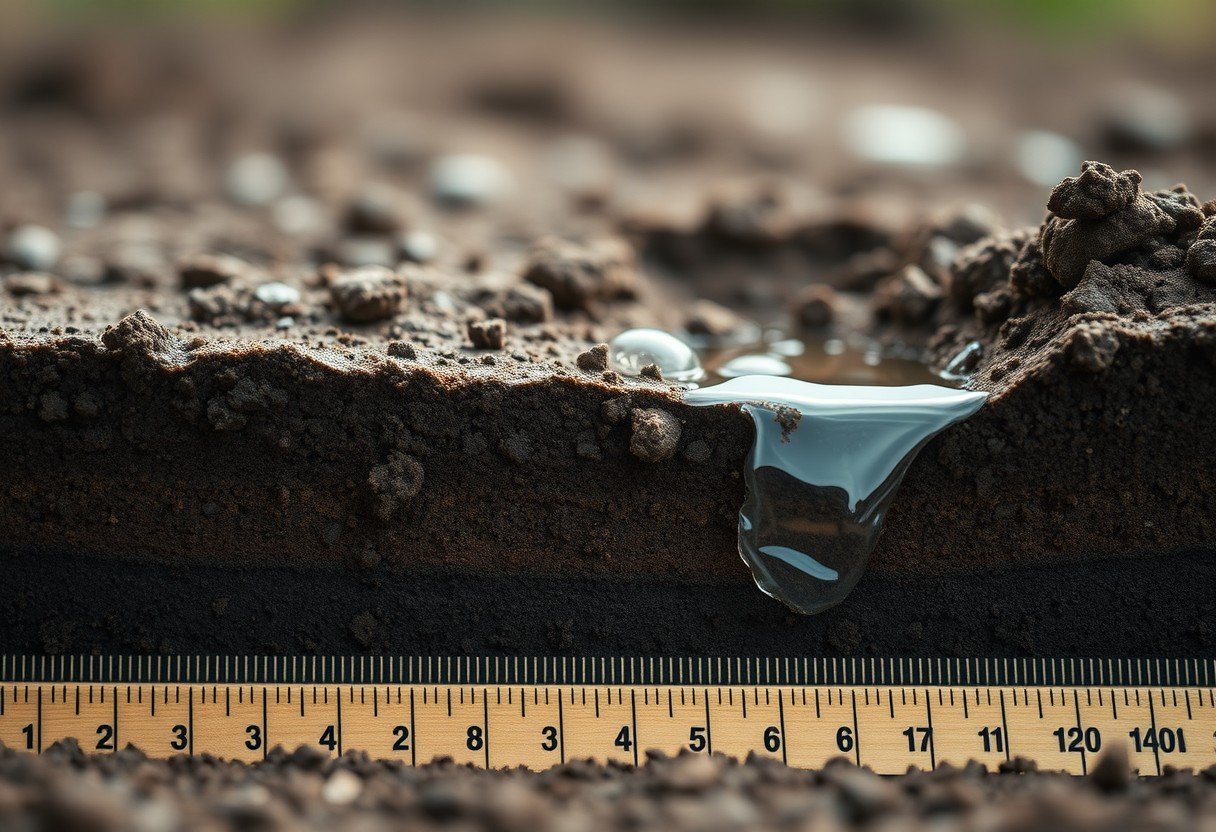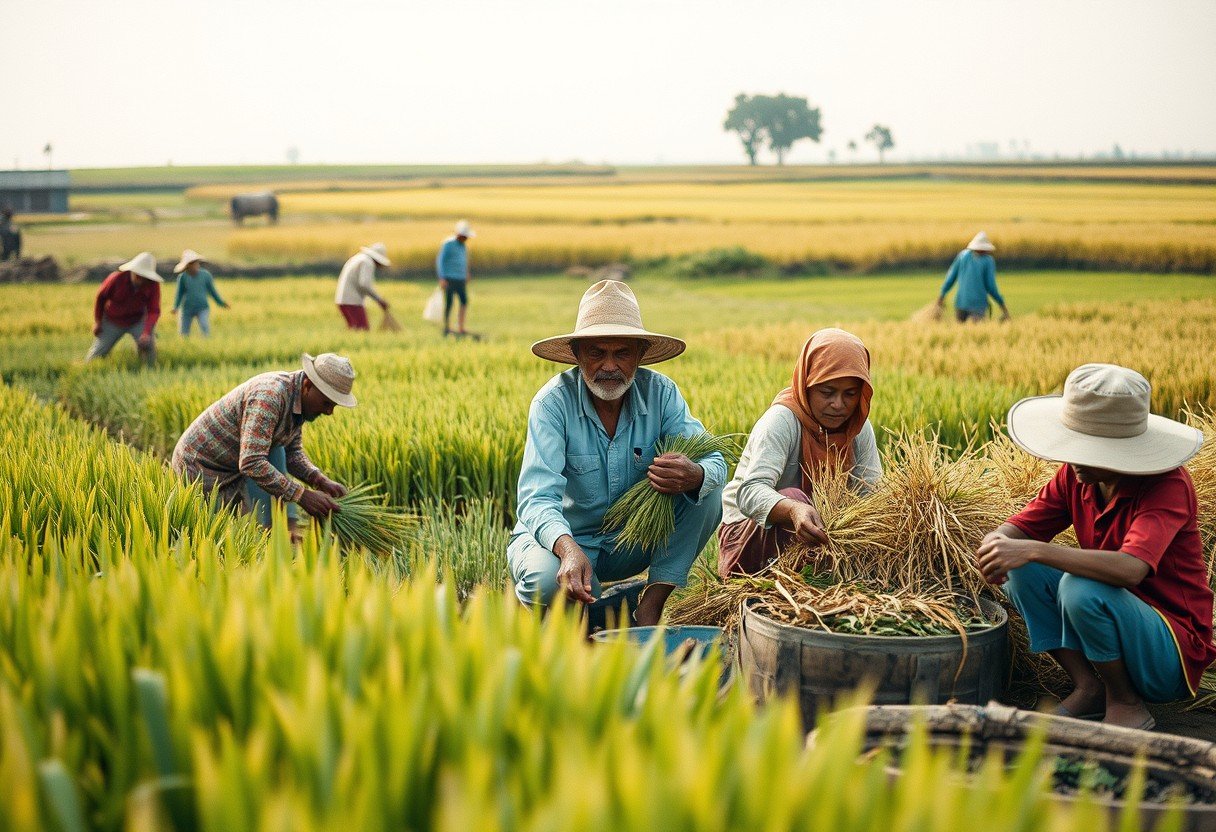When water is added to clay-rich soil, its entire behavior changes. This transformation affects everything from farming and gardening to the stability of building foundations and roads. Understanding how water impacts the strength and cohesion of clay is crucial for engineers, farmers, and homeowners to prevent issues like erosion, structural failure, and poor crop growth. This guide explains the science behind this complex relationship in simple terms.
What are the Core Properties of Clay-Rich Soil?
Clay-rich soil is defined by its unique characteristics, which are mainly due to its very fine particles. These particles, often containing minerals like kaolinite and montmorillonite, give the soil a massive surface area, allowing it to hold significant amounts of water and nutrients.
This soil type is known for its plasticity, meaning it can be molded without cracking when moist. It is also cohesive, which means its particles tend to stick together. These properties are not static; they change dramatically depending on how much water is present in the soil.
The mechanical behavior of clay, such as its ability to bear weight and resist being compressed, is directly tied to its moisture content. This is why a dry clay brick is strong, but a wet lump of clay is soft and easily squished.
How Water Alters the Strength and Stability of Clay
The interaction between water and clay particles is the key to understanding its changing strength. When a small amount of water is added, it acts like a thin film around the clay particles, lubricating them and actually increasing the cohesive forces that hold the soil together. This can make the soil more workable and stable.
However, this benefit quickly disappears as more water is added. Excessive moisture pushes the clay particles further apart, drastically reducing the friction and cohesion between them. The soil swells and its internal strength plummets.
In saturated conditions, the soil can become almost liquid-like, losing its ability to support weight, which can lead to instability and failure.
The Delicate Balance of Soil Cohesion
Cohesion is the natural force that binds soil particles together. In clay, this force is particularly strong due to the electrical charges on the surfaces of the tiny clay particles. A moderate amount of water can enhance this effect, making the soil structure more robust.
When the soil becomes saturated, the water pressure in the pores between particles increases. This pore water pressure counteracts the forces holding the particles together, causing a significant loss of cohesion. This is a primary reason why wet clay slopes are vulnerable to landslides and why riverbanks made of clay can slump and erode after heavy rain.
| Water Content Level | Cohesion | Strength | Workability |
|---|---|---|---|
| Dry | Low (Brittle) | High | Poor |
| Moist (Optimal) | High | Moderate | Excellent |
| Saturated (Wet) | Very Low | Very Low | Poor (Soupy) |
Long-Term Risks and Environmental Concerns
The changes in clay soil due to water are not always temporary. Repeated cycles of wetting and drying can lead to long-term alterations in the soil’s structure and stability. This can accelerate erosion and weathering processes, gradually degrading the land over time.
Another important factor is soil compaction. When wet clay is subjected to pressure, such as from heavy farm machinery or construction equipment, the particles are pressed tightly together. This can create a dense, compacted layer that restricts water drainage and root growth, damaging soil health for years to come.
Managing soil moisture is therefore essential for sustainable land use and environmental protection.
Practical Implications for Infrastructure and Agriculture
For construction projects, understanding how water affects clay is non-negotiable. Weakened, softened soil can cause building foundations to shift, roads to crack, and retaining walls to fail. Engineers must account for these potential changes by implementing proper drainage solutions and soil stabilization techniques to ensure long-term safety and durability.
In agriculture, the relationship is just as critical. While the water retention of clay is excellent for supplying moisture to crops during dry periods, oversaturation can lead to waterlogged roots and poor aeration. Farmers must manage irrigation carefully to maintain optimal moisture levels that support healthy plant growth without causing soil damage.
Common Methods for Testing Soil Properties
To make informed decisions, professionals rely on specific tests to measure the properties of clay soil under different moisture conditions. These methods provide the data needed to predict how the soil will behave in the real world. Testing is broadly divided into two categories.
- Laboratory Techniques: In a controlled lab setting, tests like the direct shear test and unconfined compressive strength test are used. These precisely measure the soil’s strength and cohesion on small samples at various water content levels.
- Field Measurements: To assess the soil in its natural environment, in-situ tests are performed. The cone penetration test (CPT) and vane shear test measure strength directly on-site, accounting for existing environmental factors like soil layering and moisture fluctuations.
By combining results from both lab and field tests, engineers and soil scientists can create a comprehensive picture of the soil’s stability and design effective management strategies.
Frequently Asked Questions about Clay Soil and Water
How does water affect the strength of clay soil?
The strength of clay soil generally decreases as more water is added. Water acts as a lubricant between clay particles, reducing the friction and cohesive forces that give the soil its strength and load-bearing capacity.
Can adding water to clay soil ever be beneficial?
Yes, in controlled amounts. A moderate moisture level can make clay soil easier to compact, which is useful in construction for increasing density and stability. In agriculture, it makes the soil more workable for tilling.
Do all types of clay react to water in the same way?
No, different clay minerals behave differently. For instance, montmorillonite clay swells significantly when it absorbs water, leading to a more dramatic loss of strength compared to kaolinite clay, which swells much less.
What is soil cohesion and why does it matter?
Cohesion is the force that makes soil particles stick together. It is a key component of soil strength, and when it is weakened by excess water, the soil becomes more vulnerable to erosion, landslides, and structural failure.
How do engineers know if clay soil is safe to build on?
Engineers perform a series of laboratory and field tests to determine the soil’s properties, including its shear strength and how it behaves with changes in moisture. They use this data to design foundations and drainage systems that can safely handle the site-specific conditions.









Leave a Comment